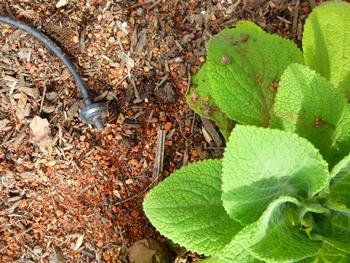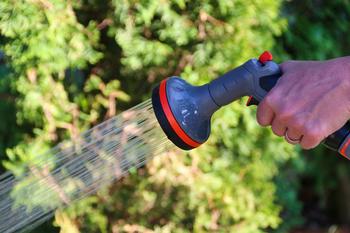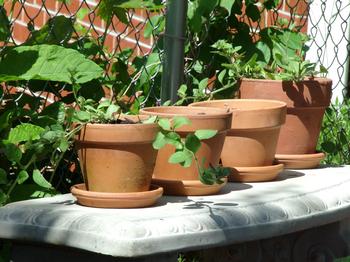Make every drop count!
-
Nanette Londeree
-
Water conservation is still top of mind as we near the end of the growing season in yet another drought year. Keeping your plants healthy, even with water restrictions, can be easier if you have the right tools for the job.
 Drip irrigation is the most efficient way to water with emitters dripping water right to the soil surface. Photo: Linda Varonin
Drip irrigation is the most efficient way to water with emitters dripping water right to the soil surface. Photo: Linda VaroninThere are plenty of ways to water plants, from a simple watering can to a sophisticated automated irrigation system with built-in weather sensors. What you use depends on the size and configuration of your garden, the types of plants you’re growing, how much time and energy you want to use to irrigate, the cost of the tools or systems you install and maintain, and the method’s efficiency.
Hands down, drip irrigation is the way to go for ease of use. This method works by placing water slowly and directly into the soil—literally “dripping” it from small water emitters placed at each plant or from a special distribution line with built-in emitters. While installing a good controller and automated valves can be costly, it is absolutely the most efficient way to irrigate your garden.
If you’re watering with a hose, your choice of nozzle can make a difference. No need to settle for a single stream of water when you can use an adjustable nozzle that allows you to produce a variety of spray patterns, from a strong jet to a fine mist or a soft rain shower. Many come with a pistol grip or a slider to easily turn the flow on and off, saving precious water as you move from plant to plant. Remember to use a rubber washer when connecting a nozzle to your garden hose. Your chances of springing a leak will decrease drastically. Hose nozzles with variable spray patterns use a pistol grip to turn the water on and off. Photo: Pixabay
Hose nozzles with variable spray patterns use a pistol grip to turn the water on and off. Photo: PixabayWant to give your prize plants a slow deep watering but aren’t ready for drip irrigation? A soaker hose might be the way to go. Made from recycled tires (also available made from polyurethane and flexible polyvinyl chloride), the hoses’ rough surface contains millions of tiny pores that allow water to seep into the soil evenly and slowly. Available in various lengths, weave the hose through your plants, keeping a few inches between the hose and the base of the plant. Turn on the faucet, and the hose will deliver water right to the soil with no spray or runoff.
Never forget to turn your water off again! In-line timers can be a real water saver by shutting off water flow when your desired time is reached, especially if you’re using a soaker hose or sprinkler. Simple mechanical types connect between the hose and the water faucet. Wind it, like a kitchen timer, to the duration you want. More elaborate digital timers run on batteries and allow you to program when water goes on or off, how long to run, and how frequent. There are even solar-powered models available.
No matter what device you’re using – a nozzle, sprinkler, or other attachment, a hose-end shutoff valve is a must-have. You can save lots of water by cutting off the water supply right at the use end rather than letting the water run while you go back to the main faucet. Capture runoff from potted plants with saucers during warm weather. Photo: Nanette Londeree
Capture runoff from potted plants with saucers during warm weather. Photo: Nanette LondereePlants growing in containers tend to dry out more quickly and need more water to stay healthy. To minimize waste, place saucers under containers to capture runoff. Give plants growing in terracotta pots a real soaking by submerging the plant (to the top of the pot) in a bucket of water and let it sit until there are no more bubbles. Remove and drain it well, then add the next plant to the bucket, topping up the water.
Our “normal” rainy season is likely still months away. Give some of these watering tips a try to conserve every drop of precious water we have while keeping your plants healthy and ready to take off next season.



